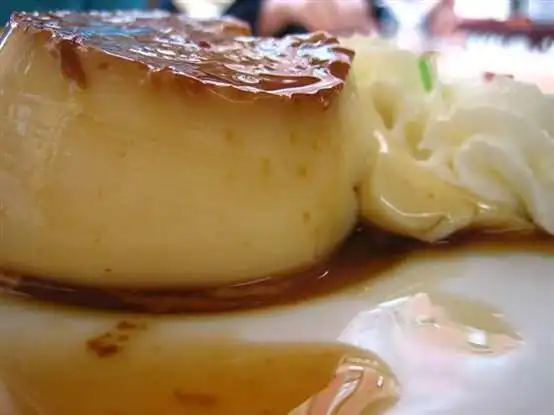Embark on a flavorful journey to Venezuela with Arepas, a cherished dish that reflects the heart and soul of Venezuelan cuisine. Arepas are versatile cornmeal patties, enjoyed throughout the day, from breakfast to dinner. In this blog, we’ll delve into the art of crafting the perfect arepas, exploring the key ingredients, cultural significance, and guiding you through a step-by-step preparation to bring the authentic taste of Venezuela to your kitchen.
Understanding Arepas: A Venezuelan Culinary Tradition:
Arepas are more than just a dish in Venezuela; they are a cultural symbol deeply ingrained in the daily lives of the people. These cornmeal patties have been a staple of Venezuelan cuisine for centuries, dating back to indigenous communities who utilized maize in various forms. Today, arepas have evolved into a versatile delight, enjoyed with an array of fillings and accompaniments.
Ingredients for Authentic Arepas:
Creating the perfect arepas involves selecting the right ingredients to achieve the desired texture and flavor. The basic ingredients include:
- Precooked Cornmeal (Harina P.A.N.): 2 cups, a staple for arepa dough.
- Water: 2 1/2 cups, for mixing with the cornmeal.
- Salt: 1 teaspoon, to enhance the overall flavor.
- Vegetable Oil: For greasing the griddle and providing a golden crust.
Optional Ingredients for Variations:
- Cheese: Grated queso blanco or other melting cheeses for a cheesy variant.
- Sugar: 1 tablespoon, for a slightly sweet flavor in breakfast arepas.
- Milk: 1/2 cup, for a richer texture in the dough.
- Butter: 2 tablespoons, for a buttery flavor.
Preparation: Crafting the Perfect Arepas:
Let’s dive into the step-by-step process of creating authentic Venezuelan arepas, capturing the essence of this culinary tradition.
Step 1: Mixing the Dough:
Combine Cornmeal and Salt: In a mixing bowl, combine the precooked cornmeal and salt.
Add Water Gradually: Gradually add water to the cornmeal while stirring continuously. Ensure a smooth and lump-free consistency.
Optional Ingredients: If desired, add optional ingredients such as cheese, sugar, milk, or butter to enhance the flavor and texture of the dough.
Step 2: Kneading and Resting:
Knead the Dough: Once the dough is well-mixed, knead it for a few minutes until it becomes smooth and elastic.
Rest the Dough: Allow the dough to rest for 10-15 minutes. This resting period helps the cornmeal fully absorb the water, resulting in a more pliable dough.
Step 3: Shaping and Forming Arepas:
Divide the Dough: After resting, divide the dough into golf ball-sized portions.
Shape into Discs: Roll each portion into a ball and then flatten it to form a disc. The thickness can vary based on personal preference.
Create a Rim: Using your fingers, gently press the edges of the disc to create a rim. This helps prevent the filling from escaping during cooking.
Step 4: Cooking Arepas:
Preheat the Griddle: Heat a griddle or non-stick pan over medium heat. Lightly grease it with vegetable oil.
Cooking the Arepas: Place the shaped arepas on the hot griddle and cook for about 5-7 minutes on each side or until they develop a golden-brown crust.
Baking Option: Alternatively, you can bake the arepas in a preheated oven at 375°F (190°C) for approximately 25-30 minutes, flipping them halfway through.
Step 5: Testing Doneness:
Tap Test: To check if the arepas are done, tap them with a spoon. A hollow sound indicates they are cooked through.
Cooling: Allow the arepas to cool slightly before slicing them open.
Step 6: Filling and Serving:
Slice Open: Carefully slice the arepas open, creating a pocket for the filling.
Filling Options: Fill the arepas with a variety of ingredients such as shredded beef, chicken, black beans, cheese, avocado, or any other preferred fillings.
Accompaniments: Arepas can be served on their own or accompanied by sauces, salsas, or toppings like guasacaca (avocado sauce) or nata (cream).
Tips for Perfect Arepas:
Consistent Dough Texture:
- Gradual Water Addition: Adding water gradually ensures a smooth, lump-free dough.
Optional Ingredients:
- Creativity in Flavor: Experiment with optional ingredients to customize the flavor of the arepa dough.
Resting the Dough:
- Improved Texture: Allowing the dough to rest enhances its pliability and results in a better texture.
Shaping Arepas:
- Uniform Thickness: Shaping the arepas with a consistent thickness ensures even cooking.
Cooking Methods:
- Versatility: Arepas can be cooked on a griddle, stovetop, or baked in the oven, offering flexibility in preparation.
Filling Variations:
- Endless Possibilities: Explore a wide range of fillings, from traditional Venezuelan options to personal favorites.
Conclusion: Arepas—A Venezuelan Culinary Delight:
In conclusion, arepas represent more than just a dish; they embody the rich cultural tapestry of Venezuela. As you savor the golden crust and tender interior of these cornmeal patties, let the flavors transport you to the vibrant streets of Caracas or the coastal regions of this South American gem.
Whether enjoyed as a hearty breakfast, a satisfying lunch, or a comforting dinner, arepas are a culinary treasure that transcends borders. So, gather your ingredients, embrace the art of shaping, and savor the experience of bringing a taste of Venezuela into your home—one delectable arepa at a time.
















